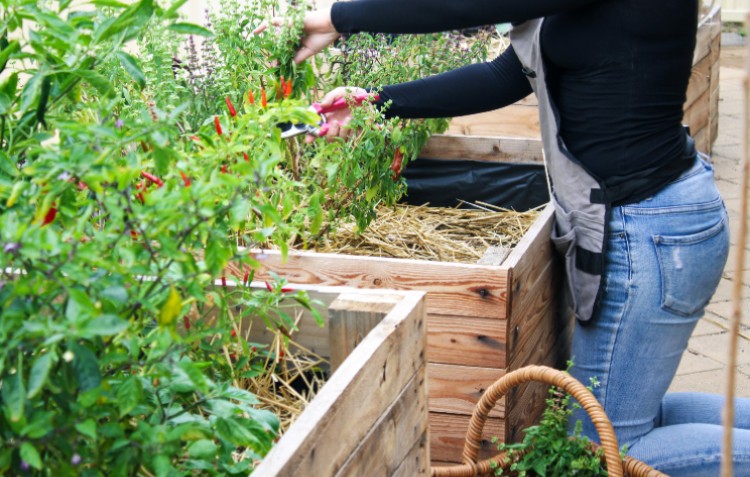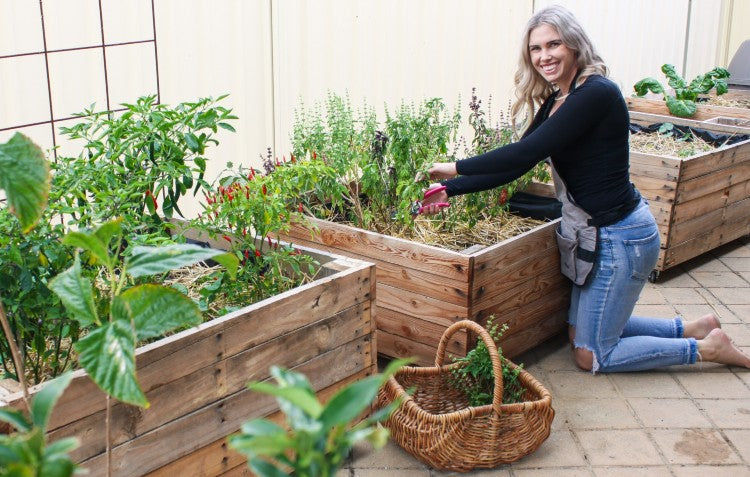
Choosing the right container
There are lots of different sized container gardens and pots available, but to get started, think about the following before making your decision:
- What size space do you have available?
- What is the distance in which you are happy to bend down to harvest from?
- How many plants do you wish to grow?
- What is your total budget?
Having an idea of where your container gardens will go and what you would like to plant is important to decide before you start shopping. If you want to keep your budget low, you can either build a container using recycled materials or use Hoselink’s Planter Bags. These are both great ways to start growing your own food without breaking the budget!
Pallet planter boxes can be made using heat-treated (not chemical) recycled timber pallets. Line them and attach caster wheels for the ultimate urban kitchen gardens. You will be able to pick timber pallets up for cheap or free at many local businesses.
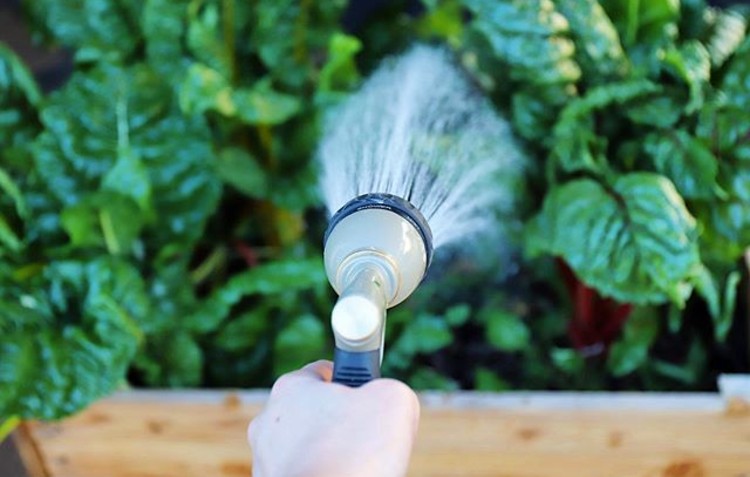
Preparing your container gardens for success
There are a few key things to get right from the start in order to create container gardens that will grow and thrive:
- Drainage - This is very important when it comes to container gardens as you don't want the soil to sit wet for too long and rot the roots of your plants. Ensure your pots or containers have drainage holes in the bottom and, if not, drill a few. It can be a good idea to put drip trays under your planters so that the pavers or ground does not get discolored from the water runoff.
- Healthy soil - The best way to grow healthy plants is to start with healthy soil. Choose good quality soil with organic compost to give your plants a great start in life. It’s important to top up your planters with fresh compost at the change of the season or before planting new crops. This will help replace the nutrients that have been used up by the previous crops. Containers have only a limited resource of food for plants so it is important to replenish these nutrients regularly.
- Location - Make sure your planters receive enough sunlight to grow. The benefits of growing in containers is that they are easier to move around to get the best light. During winter the areas of shade will be greater due to the sun tracking lower in the sky. This means you may have spots on your balcony or patio that receive very different light throughout the seasons. Observing and adjusting the locations can be the best way to maximise the sunlight and boost your plants’ growth throughout the year. Having small lightweight pots or planter boxes on wheels can make this much easier to do.
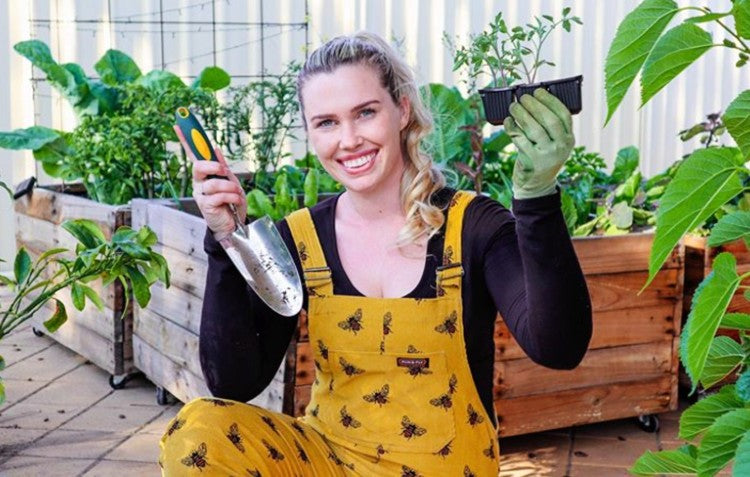
Selecting your plants
Choosing plants for your containers can be both an exciting and daunting task. It is important to think about what you would like to eat and then consider how big that plant will grow or how much room it ideally needs. There will be information on the back of seed packets or plant labels that will tell you the approximate height and width of each plant. This can help you determine how large your pot or container will need to be.
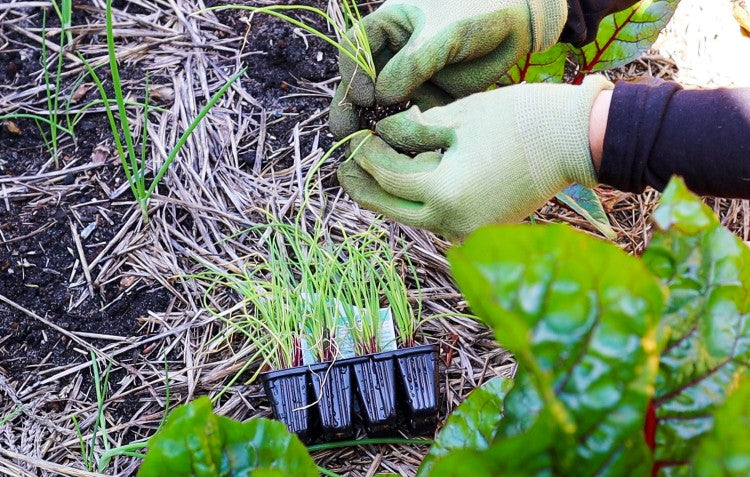
Fruit trees can be great for growing in urban gardens using pots and containers. Dwarf or semi-dwarf varieties are the best for growing in containers as they don’t need large root systems to thrive. You can still get an abundance of delicious fruit from a small dwarf fruit tree. Plus, they can be easier to maintain and protect from pests than larger varieties.
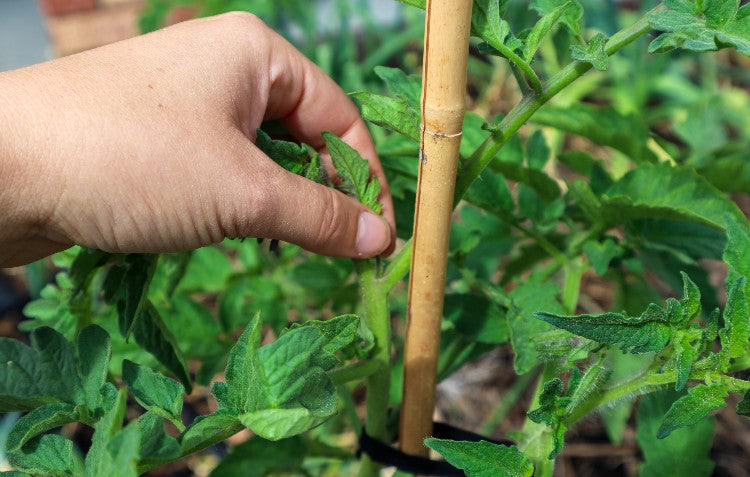
Climbing or vertical plants can be a great way to maximise your harvest and utilise container spaces. Attach a trellis to one side and grow your climbers vertically; this will allow more space to grow herbs and other veggies in the same container.
Maintaining and caring for your container gardens
The great thing about container gardens is that they are really quick and easy to water. The downfall is that they also dry out quickly. It is important to keep a close eye on your container gardens during the warmer months to ensure they do not overheat and dry out. Applying a ground cover or mulch to protect the soil from the direct sunlight can help to retain moisture. The smaller the size of the pot the greater the risk is, so it is a good idea to choose larger pots when possible. Avoid using black containers as they can attract heat and damage your plants’ delicate root systems.
Automatic Tap Timers and sprinklers can be a great way to ensure your container gardens get adequate watering. This can be very beneficial when you go away on holiday as you won't come back to dry or stressed plants. Having a hose reel nearby is also a good way to ensure you have easy access to hand watering on those extra hot days. I personally love the Hoselink Compact Portable Hose Reel for my container gardens!
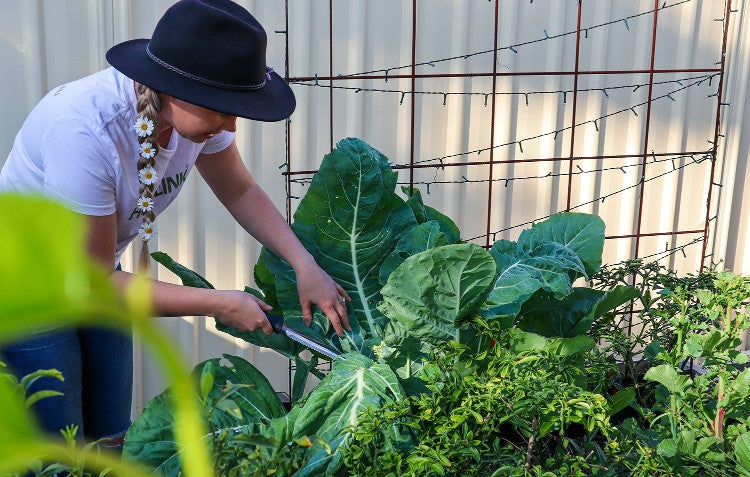
Container gardens often have less pests as they are isolated away from the garden. However, once the pests do find them it can be quite devastating in a confined space. Slaters are often a problem once they find container gardens. You can cut the base off plastic pots and use them to make guards that protect the plant’s stem. This is important when your plants are young and have soft delicate stems. Push the guards down under the soil at least 1-2 cm and this should stop the slaters from destroying young plants.
Check your gardens regularly and manually remove any snails or other pests. I make a habit of doing this each time I take a phone call. It can easily be done one handed and is a great way to multitask and care for your garden.
Feeding your plants with Hoselink’s Organic Seaweed Tonic is a great way to replenish your container garden’s nutrients and keep your plants healthy. The best time to do this is when you first plant out your seedlings. Seaweed solution is great for reducing transplant shock and will give your plants an extra boost as they get established.
It is amazing how much food can be grown in small container gardens and it makes growing food at home accessible for more people. Layering heights of plants means you can get the most out of each container garden. Container gardens allow more flexibility and ease for gardeners. You can simply take your gardens with you if you move house or move them to different locations for optimum sunlight and weather conditions.

Having your container gardens close to your house means you will be able to see what is ready and you will be more likely to use the herbs and vegetables regularly in your meals.
Growing your own food is such a rewarding process and a great way to add more intentional sustainability practices into your lifestyle. It doesn't need to be complicated, keep it simple and start today, even if that is one small container garden on your balcony.

